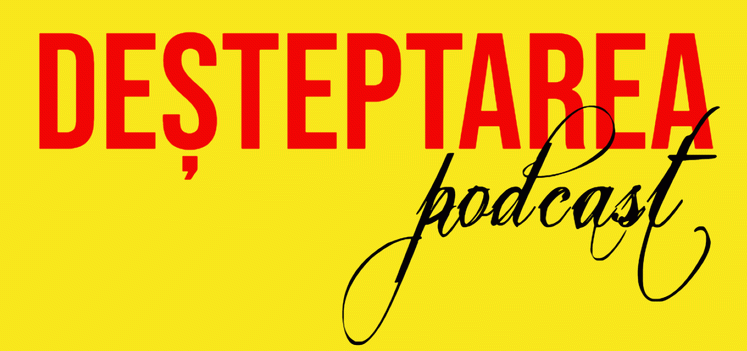On the County of Bacau territory archaeological evidence of habitation ever since the Upper Paleolithic – at Buda (Blagesti) and Lespezi-Garleni were discovered.
The Neolithic is represented by the Starcevo-Cris, Precucuteni and Cucuteni cultures. The archaeological researches from Podei-Targu Ocna, Tiganesti, Gura Vaii, Margineni-Cetatuie a.s.o. have unveiled a rich inventory, of which the ceramic and the anthropomorphic and zoomorphic plastics that characterize the Cucuteni culture stand out.
From the Bronze Age ceramics, weapons, tools, finery belonging to the Monteoru and the Noua culture too (researches at Bogdanesti, Racaciuni, Oncesti, Dealu Morii, Bacau, Racatau) were discovered, several artefacts which prove the existence of some unions of tribes. From the second Iron Age, corresponding to the era of the Geto-Dacian civilization, were discovered both Getic unfortified settlements and ‘dava’-type citadels at Brad (Zargidava) and Racatau (Tamasidava), described by the Greek astronomer and geographer Ptolemy in his ‘Geography’ (2nd century A.D.), situated on a high terrace on the banks of the river Siret, significant economic, commercial and political centres.
Following the conquest of Dacia by the Romans (106 A.D.) a part of the territories inhabited by the Geto-Dacians (Moldavia, Crisana, Maramures, a part of Muntenia) have not entered under Roman rule, and continued to be inhabited by the free Dacians. Over the territory of Moldavia hence the current Bacau county’s they were the Carps, recalled in literary sources (Strabo, Jordanes, Ptolemy). Settlements and necropolises were found attesting the Carps’ civilization in the 2nd-3rd centuries A.D., as they were having an important political and military role in the history of the Carpathian and Danubian area. The Carps have had ties with the Sarmatian, Germanic, and especially Roman kindred confirmed by the numerous treasuries of Roman coins discovered in this region. After they attacked Dacia and Moesia in the 3rd century A. D. several times, many Carps were colonized within the Roman Empire. Gradually, the territories inhabited by the free Dacians were subdued to a process of Romanization. Within the Romanic population, organized in village communities, Christianity began to spread.
Archaeological findings at Bacau, Barboasa, Stefan cel Mare a.s.o. confirm the continuity of the autochthonous population during the great migrations’ centuries — the Goths, the Huns, the Ostrogoths, the Slavs — the 4th—7th centuries.
In a document released by the Chancery of Moldavia’s ruler Alexander the Good (1400-1432), more specific a commercial privilege granted by the voivode to the merchants of Lvov, on October 6 1408, are mentioned the fairs at Bacau and Trotus. Emerged at the crossroads of some trade routes, the two urban centres are older than the above-mentioned document’s date.
These places knew a particular development during the rule of Stephen the Great (1457-1504), who was born and raised as a child, according to the tradition, at Borzesti. He erected a royal court at Bacau, as well as the churches of Borzesti and Bacau. The inhabitants of the Bacau County, and in particular the free peasants and the townsmen have definitely contributed to the battles of Stephen the Great against the Turks and the Tatars for the defence of Moldavia’s independence.
Targu Trotus is mentioned as a town in 1466 in a note on a copy of the Bible written here. In the 16th century the flourishing situation of this town is also owed to the intense extraction of salt, a product which brought significant incomes to the ruler. There are important data for the 16th and 17th centuries about Targu Trotus and the buildings here, reported in documents and memories of some foreign travellers who visited the town.
Next to other centres of Moldavia, Bacau and Targu Trotus have played an important role in the development of the links with the other two Romanian countries — Wallachia and Transylvania—, as well as with the neighbour country Poland. The commercial relationships between Moldavia and Poland have favoured the cultural links between the two countries too.
A particular importance for the county’s economy have had the salterns of Targu Ocna, exploited the long of the Middle Ages, next to the oil, exploitations commenced at the beginning of the 17th century.
In 1599 Mihai Viteazul understands the necessity of a vigorous action in order to save Wallachia’s independence and bring the other two Romanian countries — Moldavia and Transylvania — in the anti-Ottoman coalition. After, on November 1st 1599, he brought Transylvania under his authority, by uniting it with Wallachia, Mihai Viteazul stepped in through a military campaign in Moldavia too, where the Moldavian troops joined him. On May 8/18, 1600 he conquers Bacau, whose inhabitants welcome him enthusiastically. Suceava, the citadels of Tighina, Cetatea Alba, Chilia a.s.o. follow, as Moldavia is taken into possession within three weeks. Although of a short period of time, this has been the first attempt to politically unifying the three Romanian countries.
The Bacau County’s inhabitants participated in the 1848 Revolution, after which they expressed their adherence to completing the Union of Principalities within several meetings and debates. Following the elections staged, the land of Bacau has had as representatives in the ad-hoc Divan the following: Vasile Alecsandri, Costache Rosetti-Tescanu, Petrache Braescu, Dimitrie Cracti and peasant Ion Ababei from Valea lui Ion locality.
Approximately 1,600 military from the Bacau County participated in the Independence War (1877-1878), out of whom 312 lost their lives in the battles of Grivita, Plevna, Rahova, Smardan, etc. Of the fallen in the line of duty we remind Major Constantin Ene and soldier Lupu Andrei (1st Romanian troop fallen in the battles South of Danube).
Since the beginning of the 19th century, given the special interest for the soil and subsoil exploitations, the County of Bacau became one of the most important industrial areas of Moldavia (at the end of 1895 some 126 enterprises were operational). There were oil exploitations (at Moinesti, Lucacesti, Solont, Zemes, a.s.o.), coal (at Comanesti and its vicinity), salt (at Targu Ocna), the county also having a rich forest fund.
The first gas plant started activity at Solont in 1858, in Bacau was erected in 1881 the first paper plant, Letea, at Buhusi — a cloth factory (1885), at Sascut — a sugar factory (1875). Reputed was the Filderman footwear and leather plant.
The Uprising of 1907 has included the Bacau County too, reaching its peak in the Valea lui Ion, Blagesti, Buhusi, Fantanele, Bistrita localities, etc.
During WWI, on the Bacau County’s territory heavy fighting took place at Oituz, Casin, Targu Ocna, Grozesti, Ciresoaia, Darmanesti, Palanca, where the Romanian Army faced the Austro-Hungarian and German armies.
The monuments of the heroes fallen in 1877 were erected at Moinesti and Tg. Ocna, while at Comanesti and Oituz monuments in honour of the WWI heroes were raised.AGERPRES













